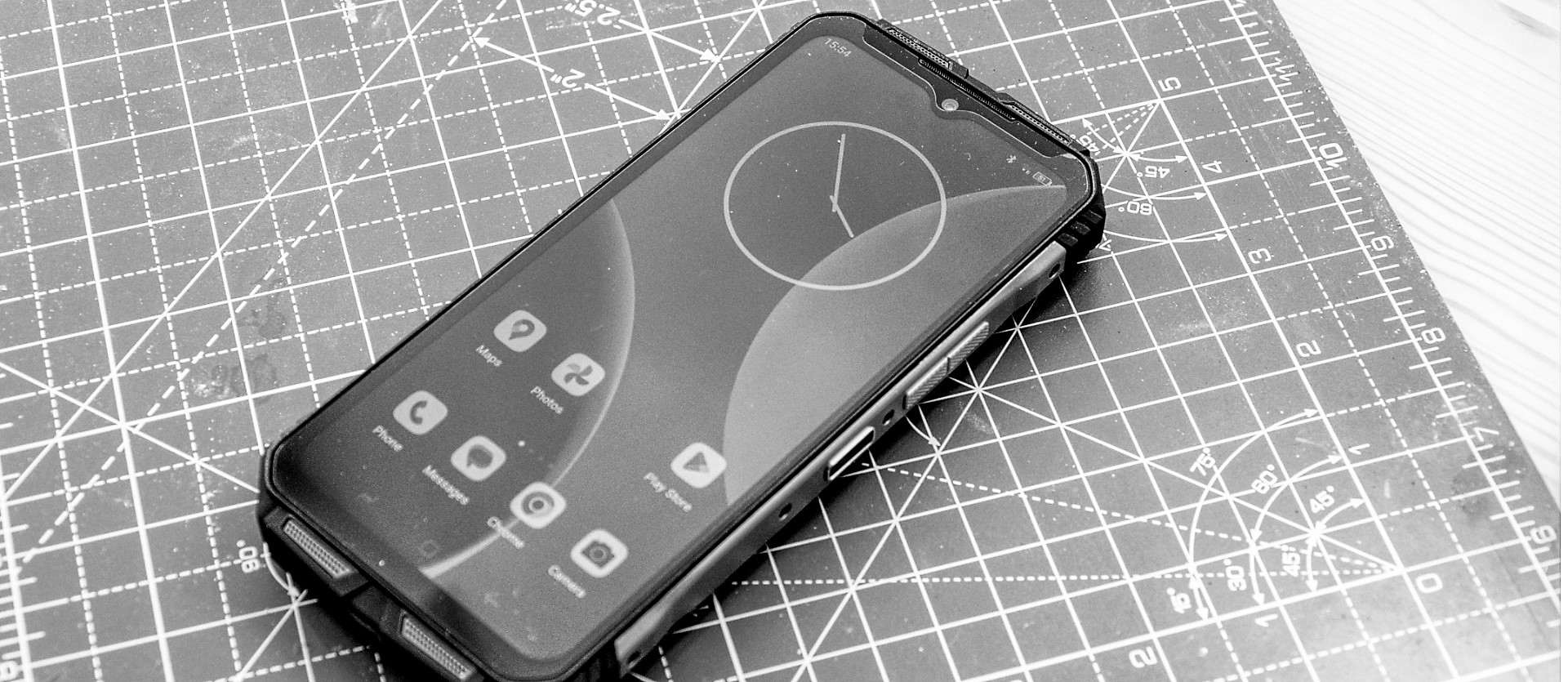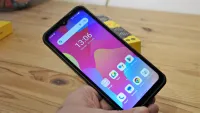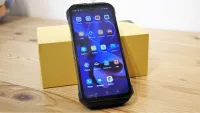TechRadar Verdict
The upcycling of the processor and memory is welcome, but the loss of the eSIM ability makes it a trade-off. The specification of this phone is outstanding for the price, but we wish they hadn’t removed the headline feature of the V30.
Pros
- +
Enhanced processor
- +
IP68 and IP69K protection
- +
108MP camera
- +
5G
Cons
- -
eSIM option was removed
- -
Lacks 3.5mm headphone jack
- -
Gold…
Why you can trust TechRadar
30-second review
It’s only five months since Doogee launched the V30, a flagship design with many desirable features.
Whatever the logic, Doogee has almost immediately revamped the V30 into the V30T, giving it a more powerful platform and generally better features.
However, it retains the critical ruggedised functionality, being an IP68, IP69K and MIL-STD-810H compliant design that won’t be easily damaged by dust or water. This includes full submersion for limited periods and shallow depths, and it can even take photos underwater.
The changes aren’t superficial either, with the Dimensity 900 being replaced with the 1080 SoC, and RAM being extended to 12GB. The only feature reduction we noticed is that the screen is now 6.58 inches, whereas the V30 display was quoted as being 6.6.
This difference might just be a marketing typo, as both screens are 1080 x 2408 resolution and have almost identical ppi density.
Everything else, like the battery size, and camera specifications, are the same with one important exception, it lost its eSIM capability.
The V30 came in Black and Orange, and the new V30T comes in Black and Gold.
Sign up to the TechRadar Pro newsletter to get all the top news, opinion, features and guidance your business needs to succeed!
But, and this is the part that will confuse many, the V30T is cheaper by $100 at launch than the V30 was, even if it’s mostly a better specification phone.
In short, if you need a rugged phone for an adventure holiday or use on a worksite, then the V30T bring everything that was good about its predecessor, plus extras, for less.
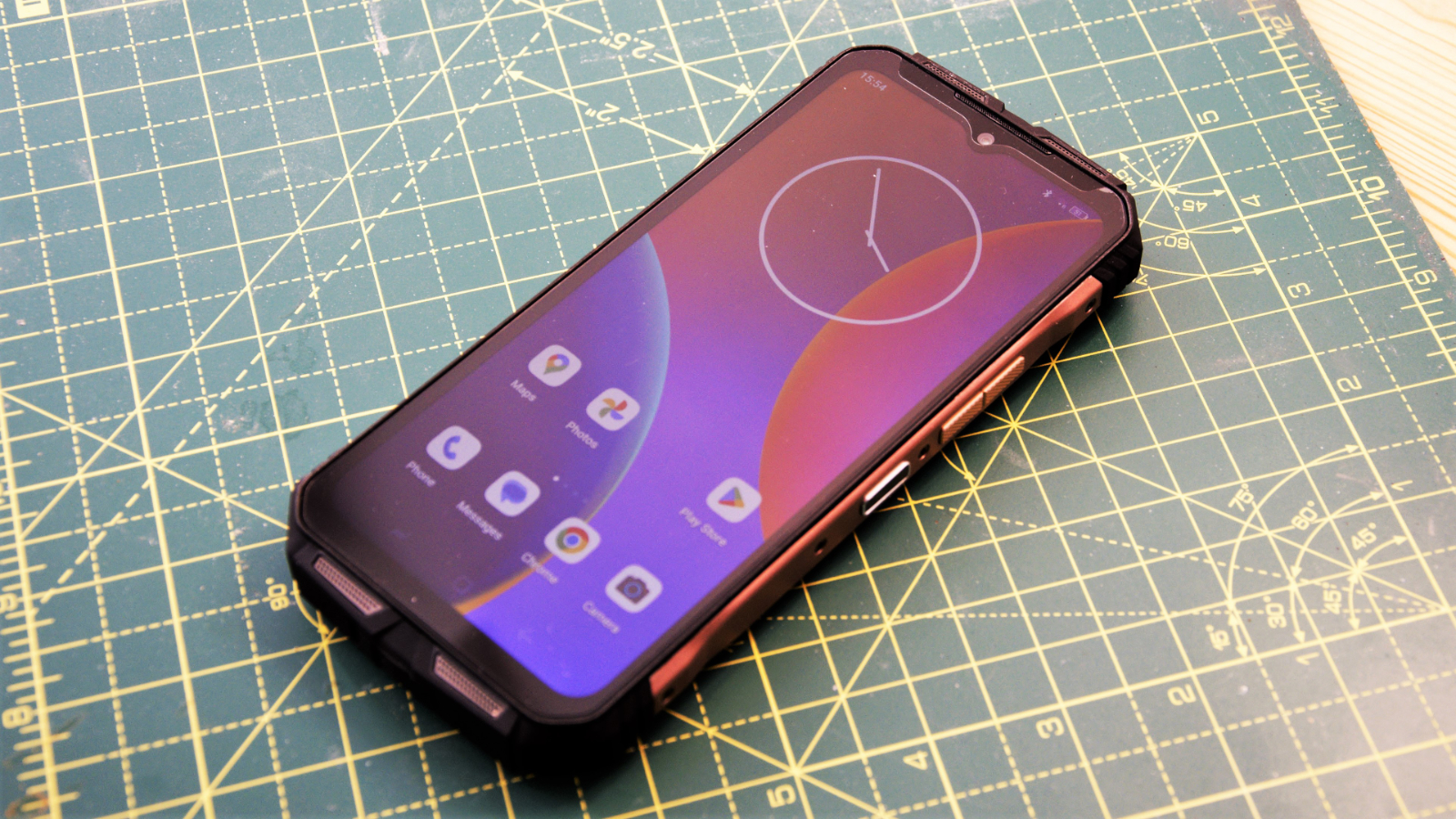
Doogee V30T price and availability
- How much does it cost? $300/£260/€300
- When is it out? It is available now
- Where can you get it? You can get it in most regions direct from AliExpress
The original Doogee V30 was $449.99 directly from Doogee at launch, but the V30T can be had for just $303 from AliExpress to US customers, a drop of 43% on the official MSRP.
How long that discount will last is hard to know, but the original V30 sells for $278.26 from the same retailer, which had an $843.22 MSRP.
Neither of these phones is on Amazon.com, but they are on the European Amazon outlets for much closer to MSRP.
The V30T comes in EU, Russian and Global versions, and Doogee also offers it in bundles with its D70 smartwatch.
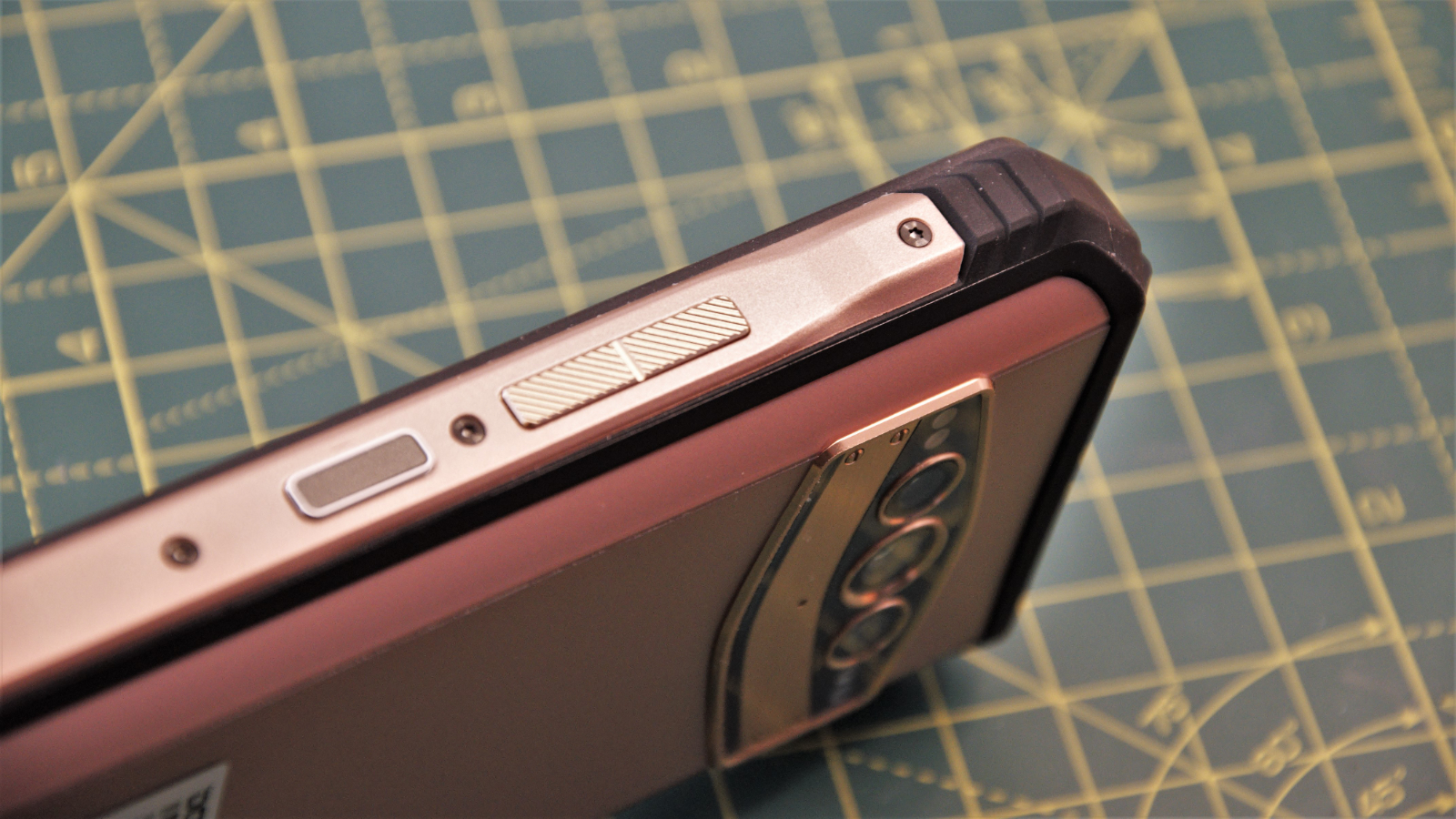
- Value score: 5/5
Doogee V30T design
- Built to last
- By-the-numbers buttons
- No audio jack
The Doogee V30T that was sent to us for review came with the following hardware:
CPU: MediaTek Dimensity 1080
GPU: Mali-G68 MC4
RAM: 12 GB (20 GB with Memory Fusion)
Storage: 256GB (expandable to 2TB with MicroSD)
Screen: 6.58" FHD+ 120 Hz IPS waterdrop display
Resolution: 2408 x 1080
SIM: Dual Nano SIM (or SIM and MicroSDXC)
Weight: 376g
Dimensions: 178.4 x 83.1 x 17.8 mm
Rugged Spec: IP68, IP69K and MIL-STD-810H
Rear cameras: 108MP main, 20MP night vision, 16MP ultrawide
Front camera: 32MP
Networking: WiFi 5, Bluetooth 5.0
OS: Android 12
Battery: 10800mAh
The review V30T we received was the gold one that looks slightly tacky to Western aesthetics, but we’re confident it would be popular in other regions.
Understandably the shape and scale of this phone are almost identical to the V30,
One aspect of this design we liked on the V30 is that the phone's body has a boat-like profile, making it slightly easier to handle. And, considering how heavy this phone is, you always want to have a secure grip on it.
The V30T uses Doogee’s tried and tested construction method, utilising a milled metal frame clad in impact-resistant plastic and dense TPU. However, where the V30 had a texturized faux leather underside, the V30T is smooth.
As with its predecessor, the V30T has the same button layout as about 75% of the rugged phone market, with a right-hand operated fingerprint reader and power button meant to be hit with the thumb. It’s not that helpful for lefties, but the mobile phone market is a numbers game, after all.
And also, in keeping with many previous Doogee designs, it comes with a SIM tray that can accept two Nano SIMs and a MicroSD card, and like the V30, it only supports one Nano alongside the MicroSD.
However, unlike the V30, this phone doesn’t support eSIMs, which is a disappointment since this was one of the highlight features of that phone.
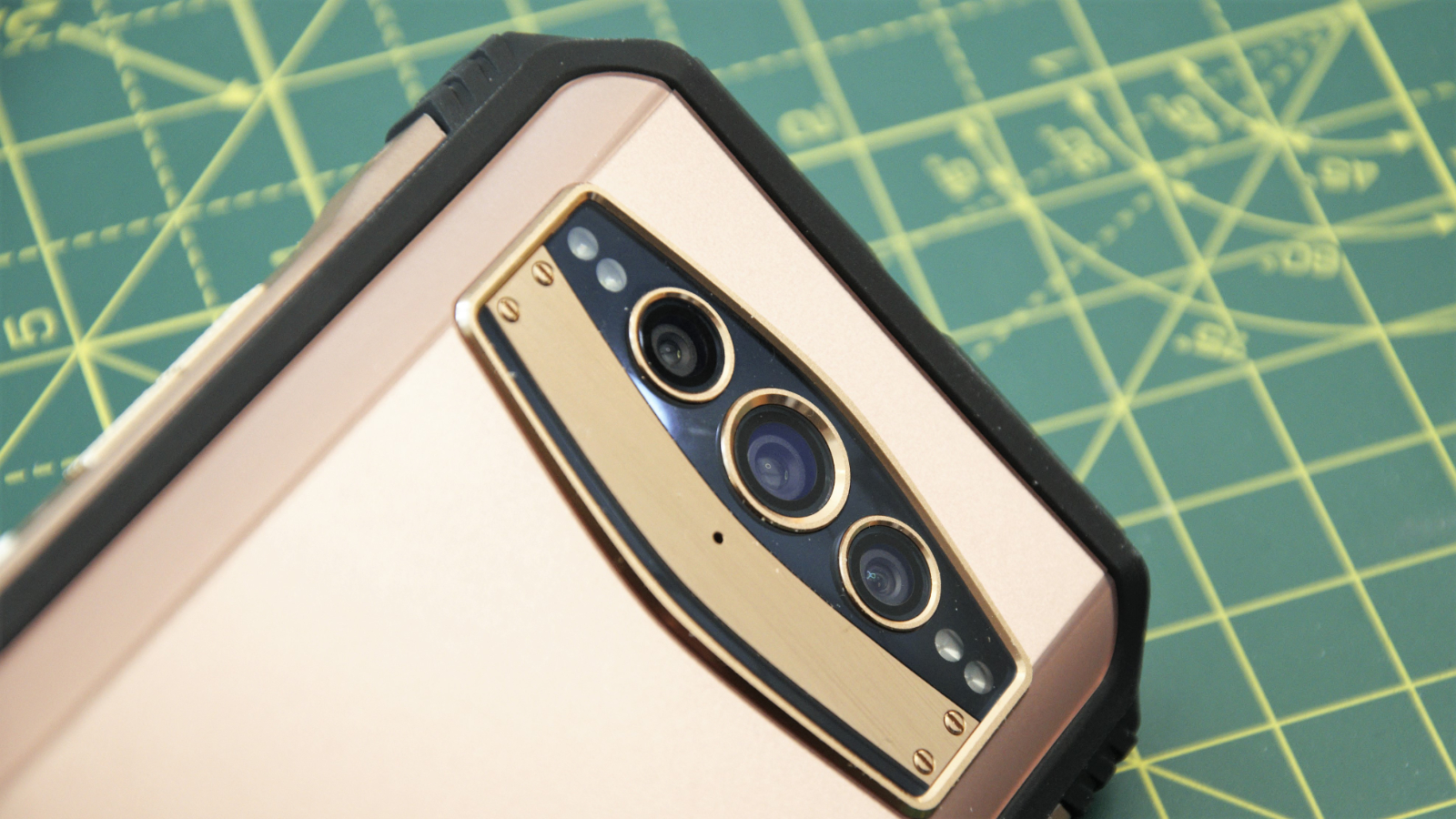
The charging and data port is the USB-C variety placed on the centre of the bottom edge and protected by the ubiquitous rubber plug. It is possible to have water-sealed USB-C ports, but this isn’t anything that Doogee has embraced so far.
The good news is that the phone will wirelessly charge at 15W using a Qi wireless charger, avoiding the need to dislodge the plug repeatedly.
What is missing here is a 3.5mm audio jack, and Doogee doesn’t include a USB-C to audio cable in the box.
The phone has a plastic tool for opening the SIM slot so you don't break a nail, a 66W Euro-pinned wall-socket power supply, a USB-C to USB-C OTG cable, a few screen-protecting accessories, and an instruction manual.
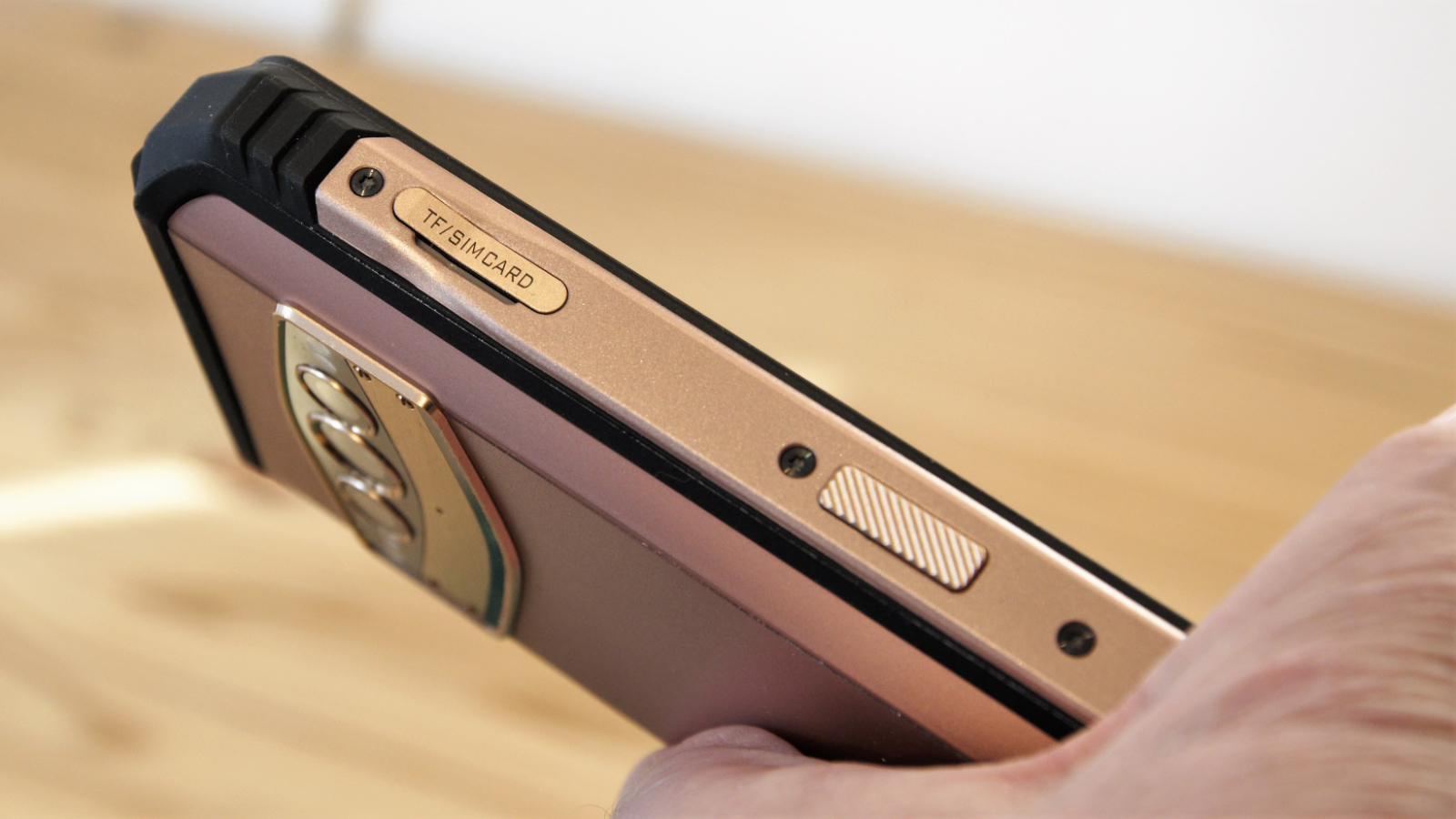
Design score: 4/5
Doogee V30T hardware
- Even more power
- Great specification
- Where did eSIM go?
Until recently, the MediaTek Dimensity 900 was the SoC of choice for flagship designs for those companies unwilling to pay Qualcomm for the latest Snapdragon silicon. We’ve seen it used in the V30 and the Ulefone Power Armor 18T, but MediaTek now has the Dimensity 1080, an even more powerful SoC.
It’s easy to assume that MediaTek just increased the clock speed on this SoC, which is true to a degree. They are both octo-core chips with six ARM Cortex-A55 cores for efficiency, and the Dimensity 1080 has two 2.6GHz performance cores, whereas the 900 has 2.4GHz clocks on those.
The efficiency cores are unchanged, being 2GHz Cortex A55 chiplets in each.
Counter-intuitively the clock speed of the Mali-G68 MC4 on the Dimensity 1080 has gone down 100Hz to 800MHz over the previous design, but it balances that decrease in clock speed by having 33% more shaders, up from 48 to 64.
This enhancement gives it a small but detectable edge when generating 3D images, like those in games and VR applications.
Like others using the Dimensity SoCs, this phone can patch a portion of the storage into the phone as if it is RAM. And, as it comes with 12GB, that can increase the total capacity available to the system to 20GB.
That represents a considerable amount of apps, depending on size, for those that like to stuff their phones with every conceivable tool and title.
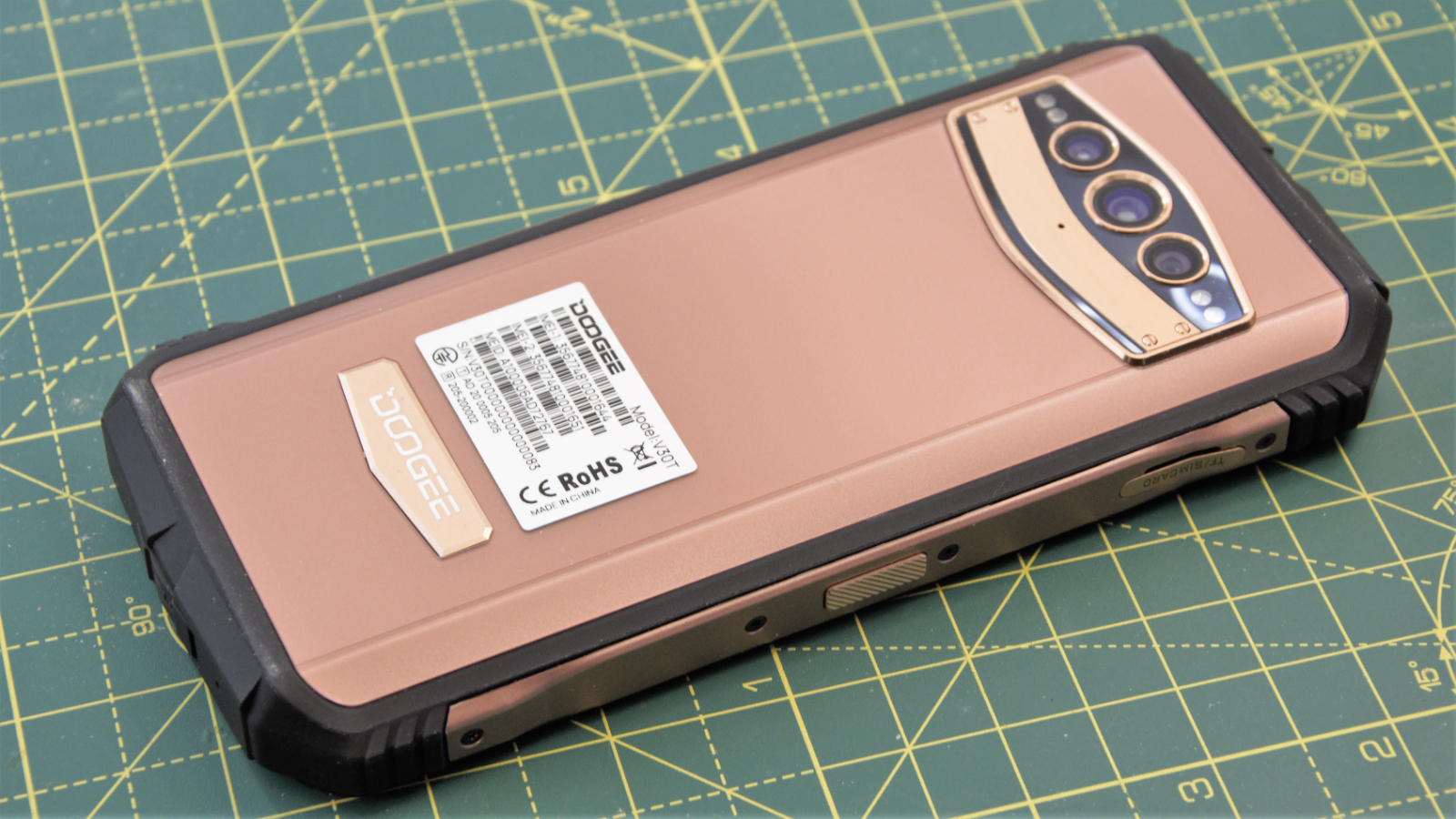
So far, so good, but having heralded the V30 as the first rugged design with an eSIM capability, Doogee has now forgotten all that excitement and removed this ability from the V30T.
If you don’t have a use for having up to six numbers and changing them remotely, then this probably isn’t a problem. But it did at least enable the V30 to use a MicroSD card and still use two numbers, and this is something the V30T can’t match.
The other disappointment in the hardware is that the V30T doesn’t support the Widevine L1 video decryption standard, only L3. We’ve banged on about this with Chinese phones for some time, but they’re made the judgement call that streaming services like Netflix and Disney+ being limited to just 480p isn’t an issue. Or, it's not worth the licensing fee to increase to higher levels.
This decision appears to fly in the face of adding 5G functionality since one of the important abilities that 5G brings is to stream high-quality video.
Those that want a rugged phone with better than 480p streaming services need to consider one of the Samsung rugged options or the Motorola Thinkphone we recently covered.
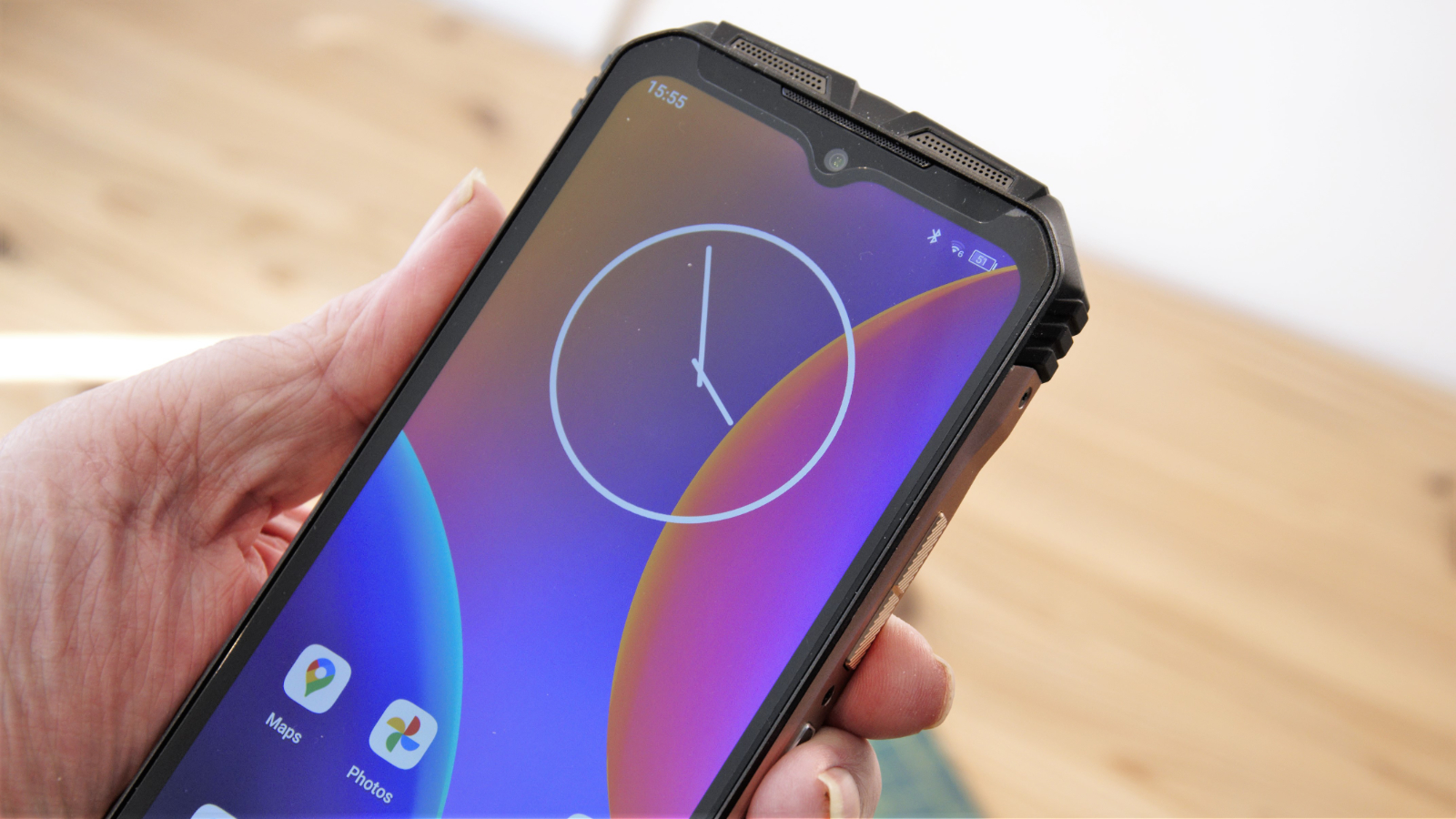
- Hardware score: 4/5
Doogee V30T cameras
- 108MP sensor on the rear
- Wide-angle, macro and night vision
- Four cameras in total
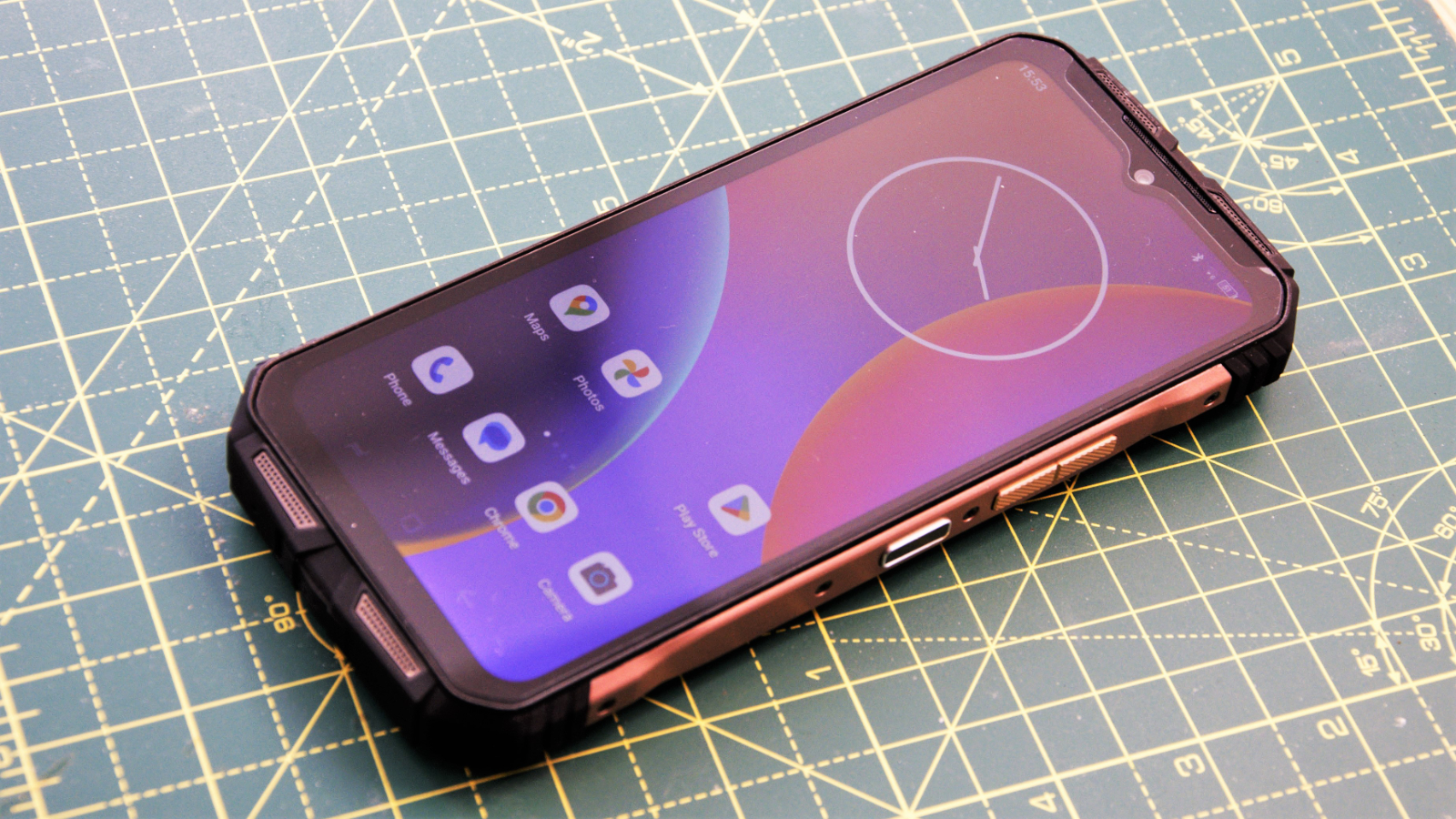
The Doogee V30T has four cameras:
- Rear cameras: 108MP Samsung S5KHM2, 16 MP OmniVision OV16B10 (Ultra-Wide), 20MP Sony IMX350 (Night Vision)
Front camera: 32MP SONY IMX616 Sensor (Wide)
If you require the finest levels of detail, the 108MP Samsung S5KHM2 primary sensor on the Ulefone 17 Pro may provide some incredible resolution photographs.
The downside to taking images with a resolution of 12000 x 8992 is that it will only accomplish this in a simple snapshot mode; all pro and speciality capture is limited to 12MP.
The 12MP results are outstanding, given the size of the sensor and the amount of light it can catch, but it would be nice to extract more resolution without sacrificing all the shooting options.
We’ve already talked about this camera in some detail in the V30 review, and it's identical here, from what we can ascertain.
The good points are that it can capture 4K video, but there is no control over the FPS, and there aren’t any slow-motion video options.
With the capabilities of the Samsung S5KHM2, this is yet another camera that uses it but fails to fully exploit what it is truly capable of achieving.
Camera samples


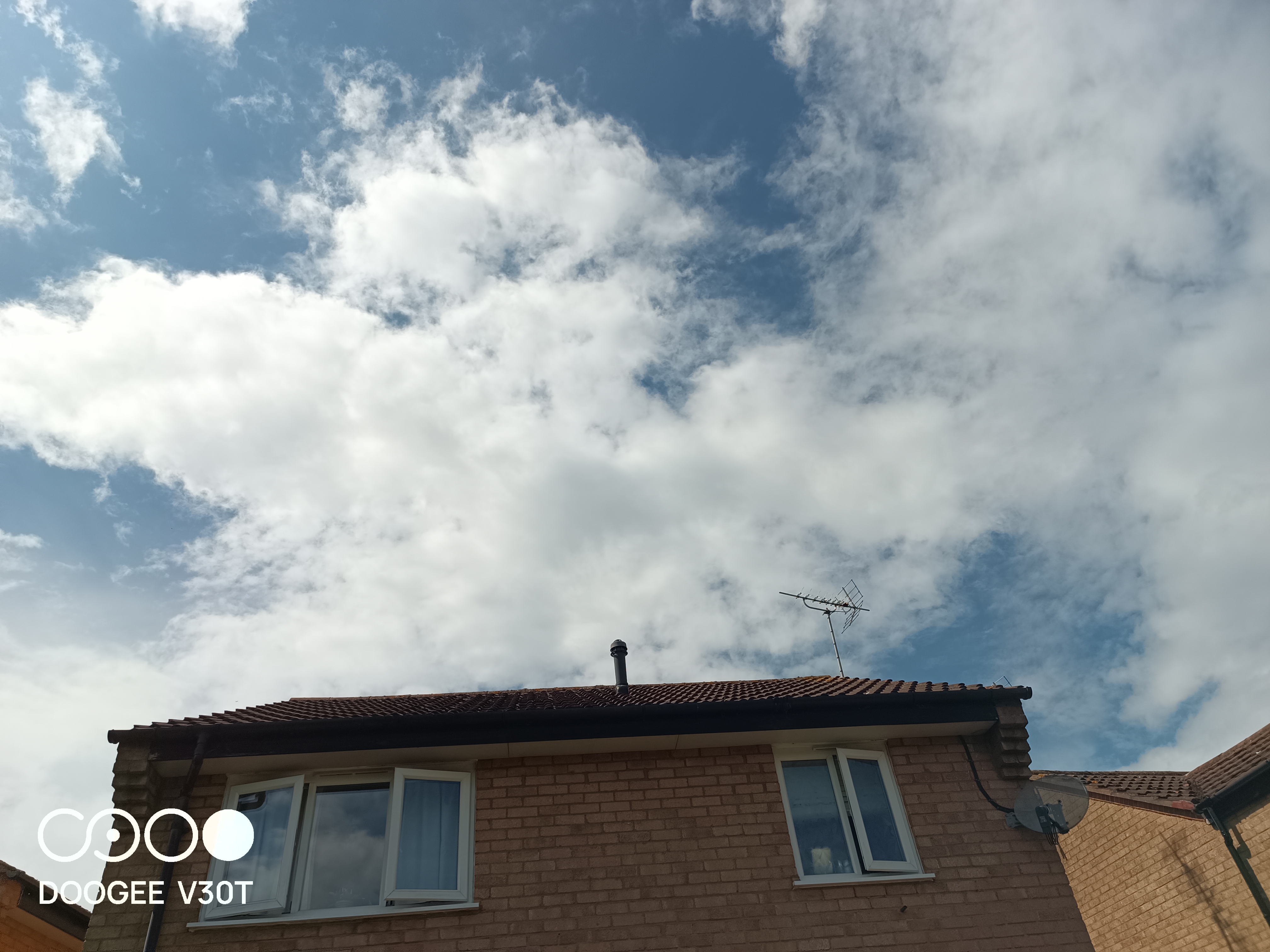

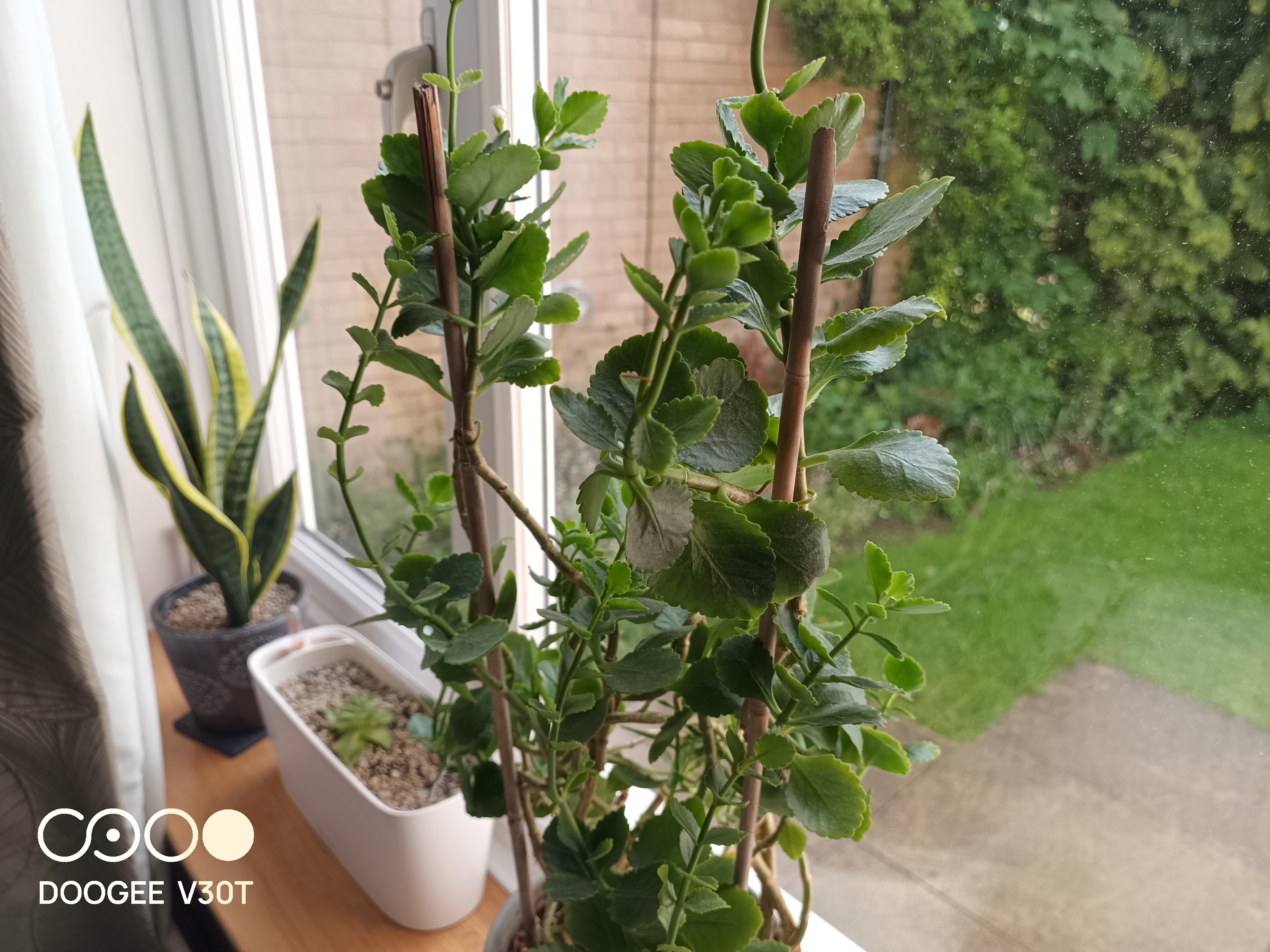
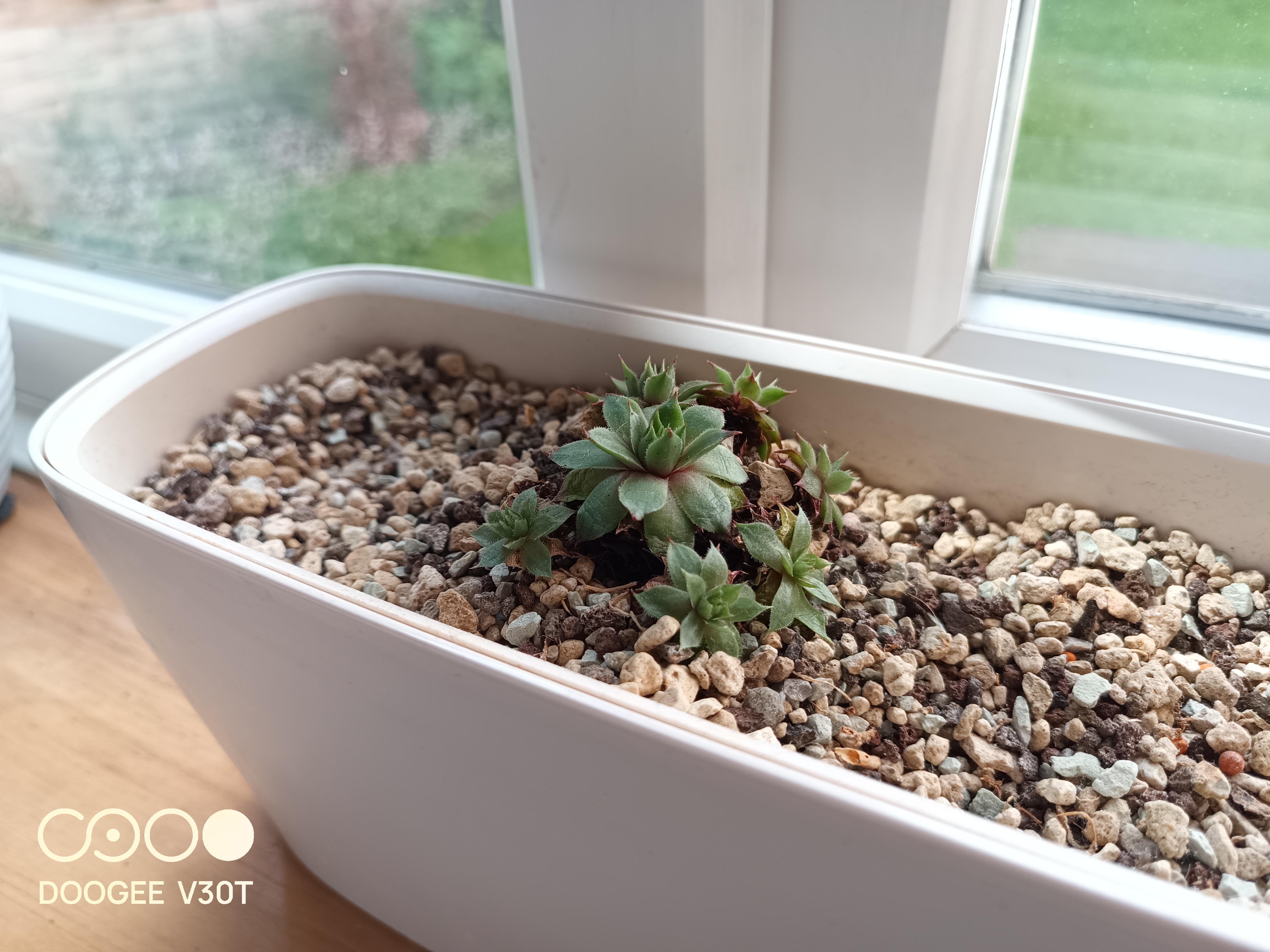
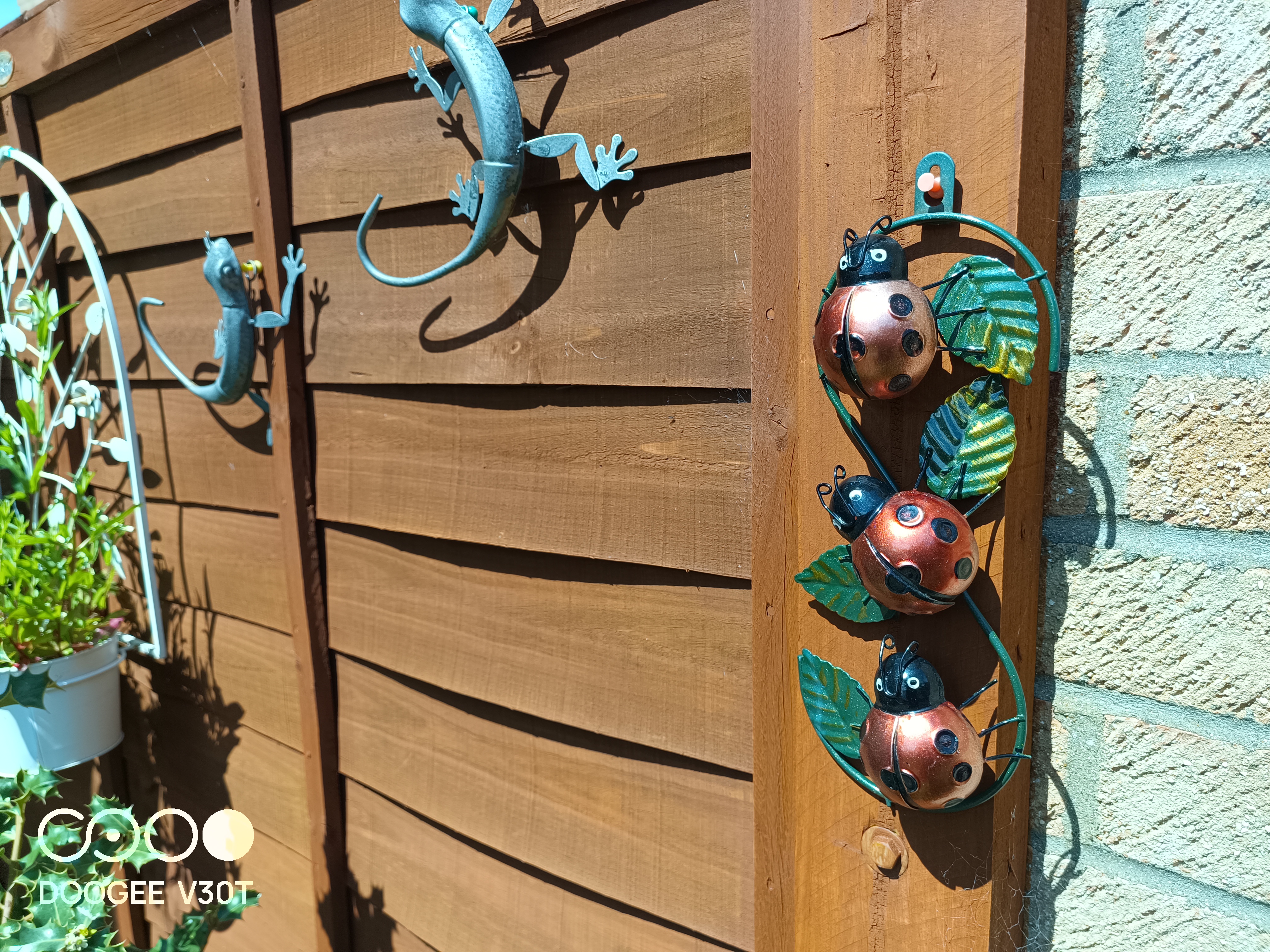
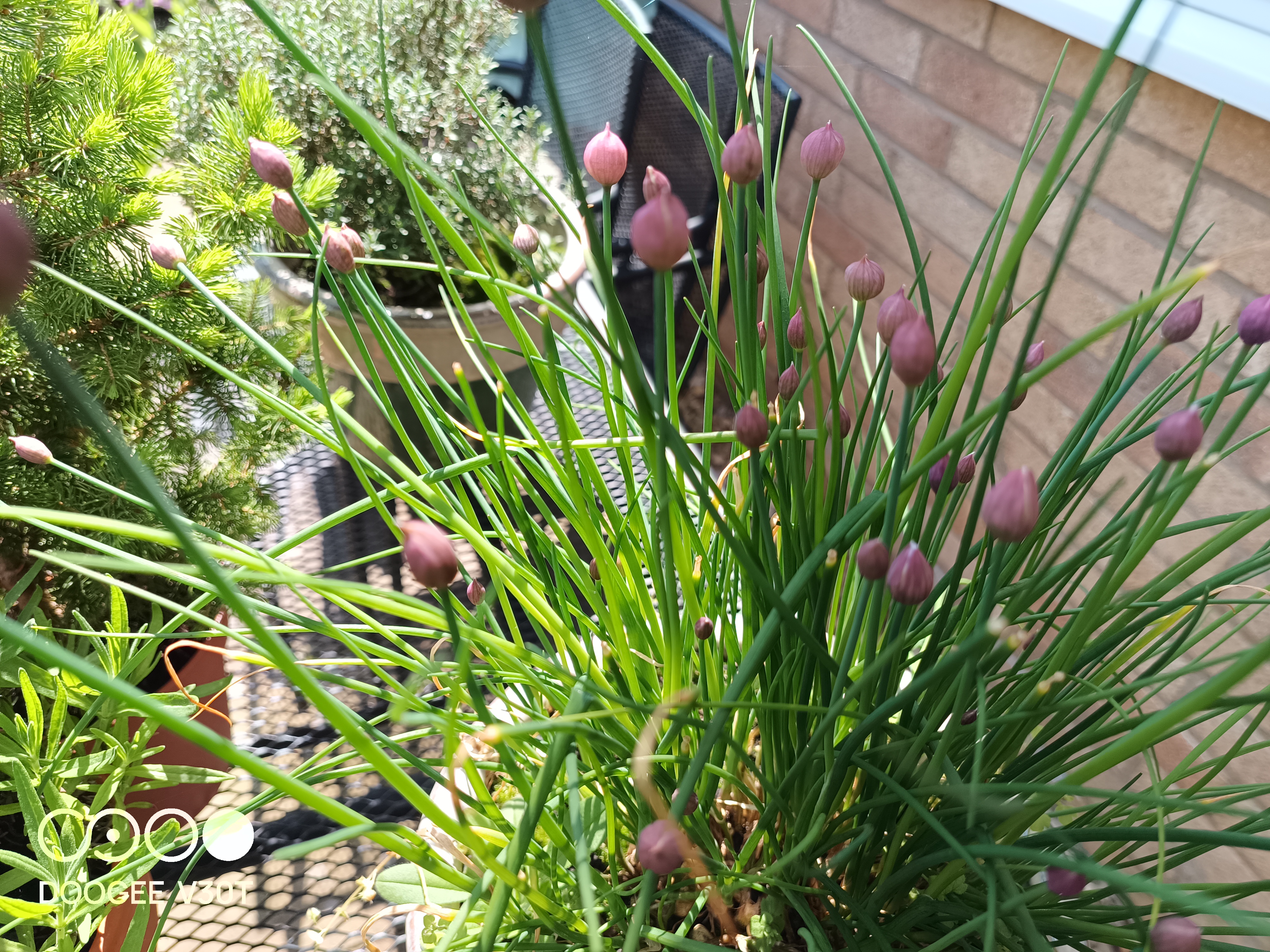

- Camera score: 4/5
Doogee V30T performance
- All-round performer
- Strong GPU
- Power and efficiency
This is how the Doogee V30T performed in our suite of benchmark tests:
Geekbench: 810 (single-core); 2176 (multi-core); 2628 (OpenCL)
PCMark (Work 3.0): 9979
Passmark: 10737
Passmark CPU: 4681
3DMark Slingshot: 5372(OGL)
3DMark Slingshot Extreme: 4193 (OGL); 3983(Vulkan)
3DMark Wild Life: 2297
It’s worth noting that the performance of the V30 was outstanding, and with the Dimensity 1080 SoC, the V30T is even better.
That said, in a few tests, for whatever reason, the V30T is either precisely the same or even slightly slower than the V30.
Where it is better is in those tests that use graphics, like 3DMark and the GeekBench.
However, the difference isn’t huge, typically around 5% or less.
To compare this to other architectures, the Dimensity 1080 is getting close to the Qualcomm Snapdragon 778G, but it hasn’t quite got the legs on some of the tests. It’s better than the Snapdragon 768G and Kirin 985, but slightly behind the Samsung Exynos 9820.
That’s more than a respectable level, and given the other functionality in the phone, it should be sufficient for some gaming and intensive tasks.
- Performance score: 5/5
Doogee V30 battery
- Good battery size
- 66W Fast charging
- 15W Qi charging
This phone has a battery inside that is 10800 mAh in capacity, which is sufficient for prolonged use without recharging.
Doogee claims that the V30T (as did the V3) should last longer than three days of ordinary use before requiring a recharge, and it might even last longer than that.
The 66W charger provided with the device can recharge 50% of its battery capacity from empty in around 30 minutes, but it will take four hours to reach that level using the 15W wireless charger.
The physical bulk of the V30T isn't so high that it makes it unusable, unlike more robust designs that offer a larger battery but trade off weight for that advantage.
The capacity is sufficient for a camping trip, but alternative designs have double this capacity if long periods away from power are likely.
- Battery score: 4/5
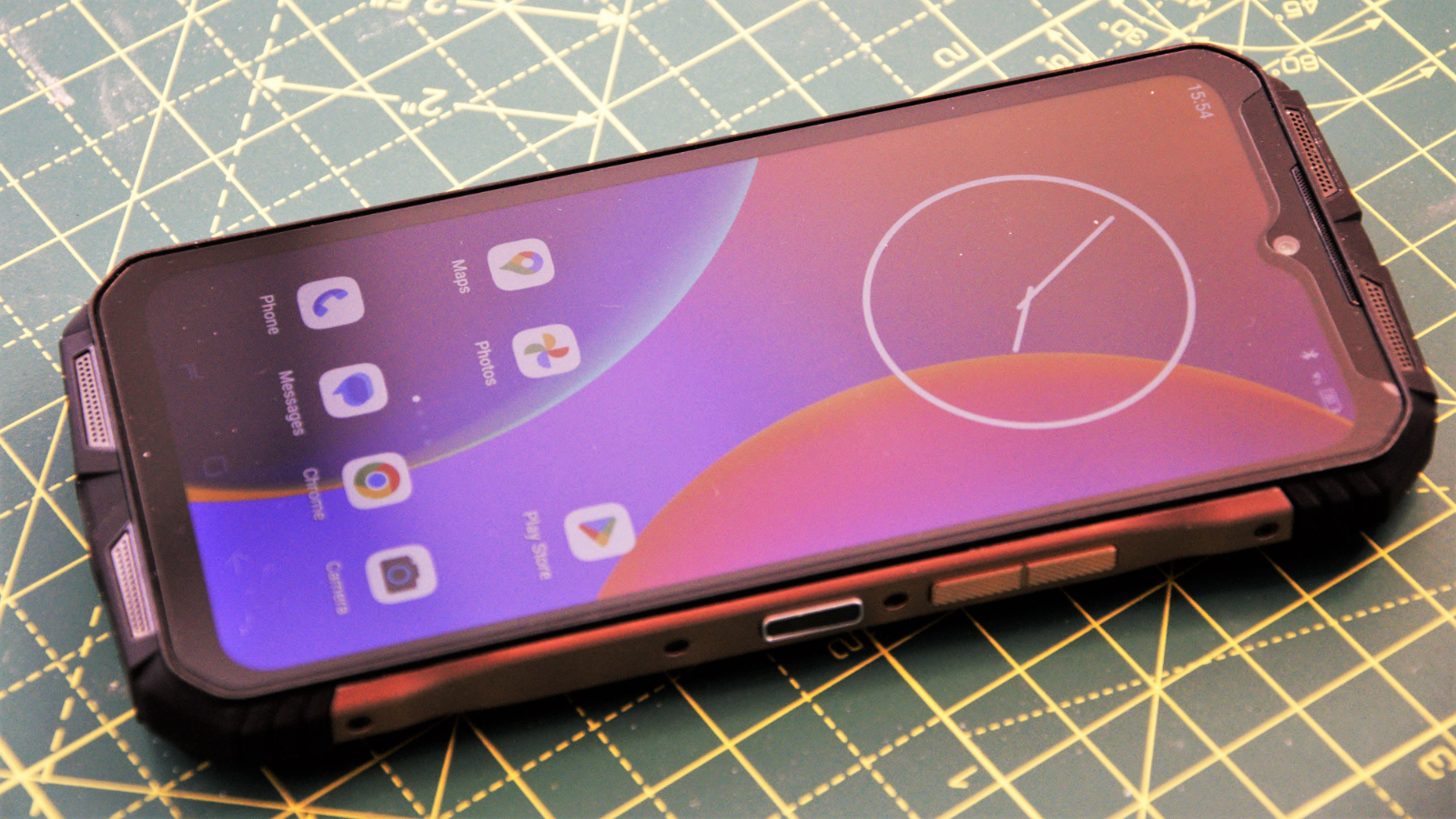
We considered the V30 the best Doogee phone we’ve tested so far, and in some respects, the V30T builds on that foundation. The enhanced SoC is a step up, but it has the same excellent camera, battery life and 5G communications.
But it lacks the stand-out feature of eSIM technology, something we expect to see on many phones in the coming year.
That leaves potential customers with a dilemma. Should they grab the new V30T with its tweaked processor or save a few dollars and get the V30, with the added bonus of included eSIM support.
It’s a hard call to make, but it's good that potential customers have both devices to choose from rather than only one.
Doogee V30 score card
| Attributes | Notes | Rating |
|---|---|---|
| Value | Excellent value for the money | 5/5 |
| Design | Typically chunky but easy to handle and use. | 4/5 |
| Hardware | A powerful platform, 5G comms, 108MP camera but without eSIM technology | 4/5 |
| Performance | Fast, strong GPU and power efficient | 5/5 |
| Camera | 108MP stills, 4K video but only 30fps at any res | 4/5 |
| Battery | Good battery size gives lots of use time, and it has fast charging with provided charger | 4/5 |
| Overall | A premium spec rugged phone at an amazing price | 4/5 |
Should I buy a Doogee V30T?
Buy it if...
Pictures and videos are important
The sensor on this phone can take excellent pictures and video, and the SoC has the power to process them on the phone.
You need a go-anywhere design
It’s waterproof, dustproof, can handle submersion and knocks, 5G and has eSIM technology. There isn’t much that this phone can’t cope with.
Don't buy it if...
Large phones are an issue
With such a big screen and more than 10,800 mAh of battery capacity, the V30T is a large phone.
You use MicroSD and two SIMs
With room for only one Nano sim and a MicroSD card, the lack of eSIM is a problem for those that want a memory card and two phone numbers.
You intend to watch streamed content
The lack of Widevine L1 reduces most streamed content to 480p, so even if it has a good quality and high-resolution screen, using it for Netflix or Disney+ won’t yield high-resolution results.
Also consider
Doogee V30
It might seem silly to say, but the original V30 is still an excellent choice that can be had for a bargain price these days. With the same 108MP main camera sensor and a very powerful Dimensity 900 SoC, this is a premium device at a budget price.
The eSIM capability allows you to have more than two phone numbers if that’s important.
Read our Doogee V30 review for more information
Doogee V Max
Built around the same SoC, the chunky V Max makes the V30T seem small, when it isn’t.
The V Max is a more expensive device at twice the asking price, and its party trick is to have 22000mAh of battery capacity. If you want a phone that gives you a workout to carry and has battery capacity to burn, it’s the V Max.
Read our Doogee V Max review for more information.
Ulefone Armor 15
An attractive design with a secret bay to hold and charge included Bluetooth headphones. Unfortunately, it doesn’t offer 4K video and has a smaller battery, but it costs less and comes with earbuds. A less imposing option.
Read our Ulefone Armor 15 review for more information.
We've rated the best rugged laptops.
Mark is an expert on 3D printers, drones and phones. He also covers storage, including SSDs, NAS drives and portable hard drives. He started writing in 1986 and has contributed to MicroMart, PC Format, 3D World, among others.
